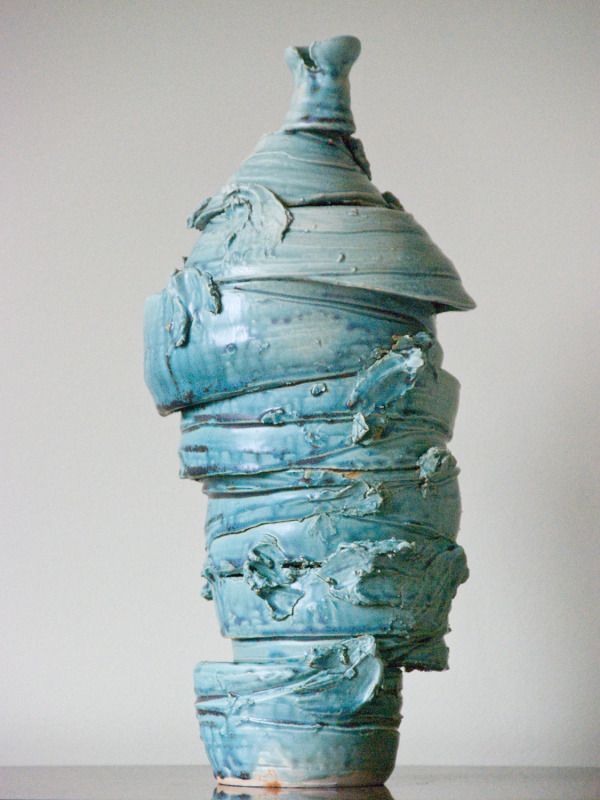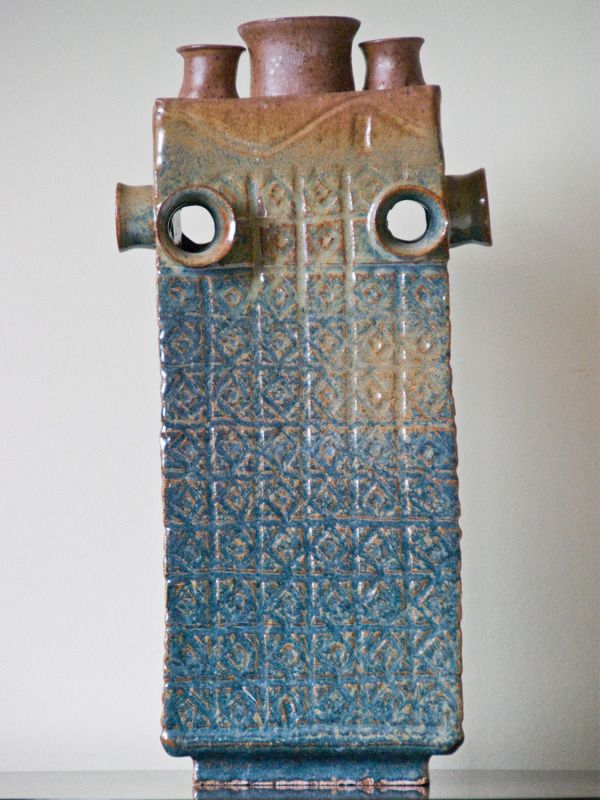This is a much more recent piece, 2010 or so, and unlike the previous reflection on the multi-spouted slab, this was much more deliberate and intentional - although it didn't realize in the way I envisioned it (which tends to be the case). The title came after completion, which I'll get to in a minute, but the idea of throwing a large bottle (turned out to be... 14? 15? inches) and then cutting it into segments and stacking them in a stagger formation was an idea in my sketchbook. I suppose this was a test piece and actually trying to make it provided some insight into how I might go about it the next time.
After I threw the piece, and prior to cutting it into segments, I put a groove into the body with a wooden knife; cyclically going up and down. I then let it dry a bit. In retrospect, I should have let it dry a bit longer. I think I was a bit eager to move the project along but a bit more patience would have served the piece better in the long run. When I cut off the sections, they were still a bit wet which ultimately gave it a droopy look. And again, I could have let the pieces dry a bit longer after cutting out the segments but at the same time I didn't want them to dry out entirely. A nice leather-hard state of the clay would have been ideal. Another thing that struck me was that I should have thrown the walls a bit thicker. As you can see in the picture to the far right, the walls are a good size for a bottle this big but for the purposes I had in mind thicker walls would probably have provided a bit more stability and facilitated the stacking process. There simply wasn't enough contact between the pieces to firmly connect the segments.
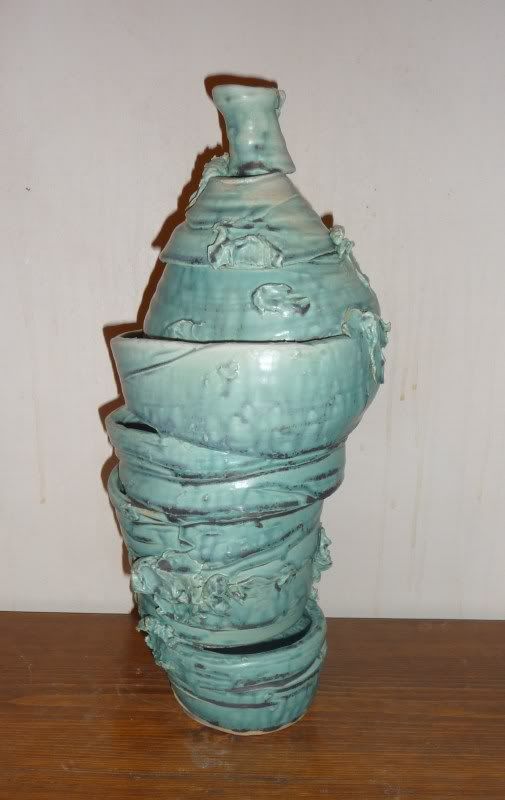
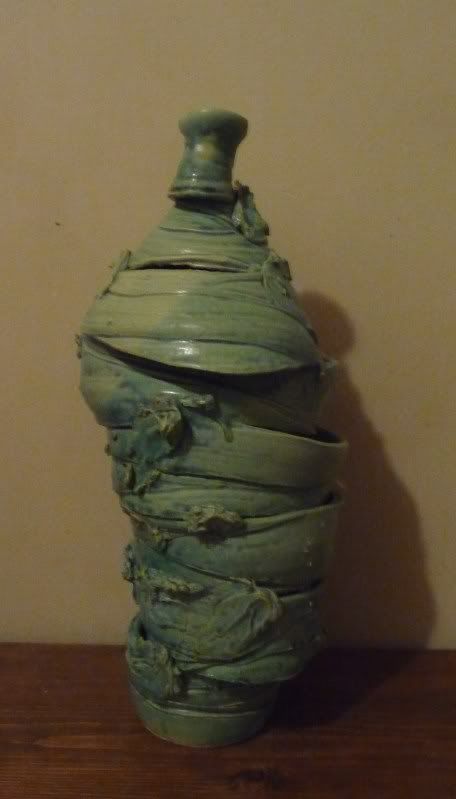
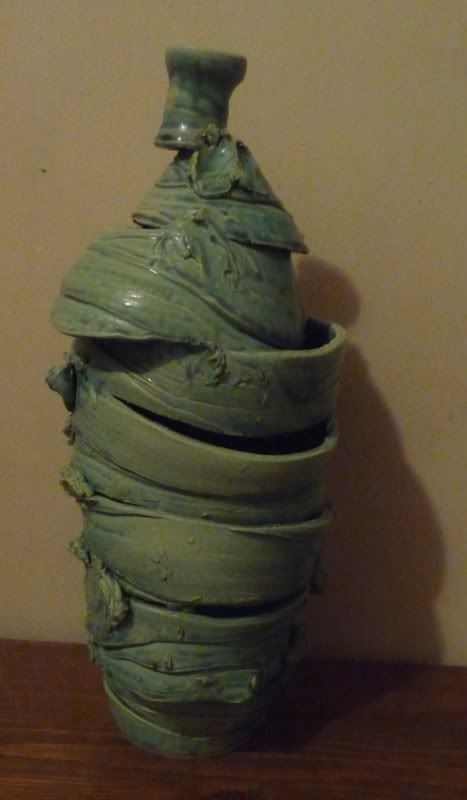
Nonetheless, I made due with what I could. I was determined to make it work somehow. Another thing that became strikingly obvious and something I didn't think of in my sketchbook was the effect of gravity! Haha duh, right? What this means is that there was a series of balancing acts that had to go into re-assembling the sections into a stagger and how to position each piece became it's own little struggle. It got sloppy and assembling it wasn't as easy as I thought it might be. Cracks starting appearing because one section wasn't bearing the weight - too wet or the walls were too thin. This prompted the use of more clay on the sides and a viscuous slurry to give the smearing look that you can see in each of the pictures above. I liked the smear. Improvised ideas become "artistic" when it amends structural inadequacies.
I liked the idea of smearing clay and giving a certain "organic" texture to the piece. Something I'm likely to explore further when I get another chance. But the process of actually building this piece not only yielded a fun stylistic idea but it also gave more insight into the balance of patience and construction into making something like this work. How this piece actually turned out looks dramatically different from what's in my sketchbook. On one hand, there is the attempt to faithfully recreate the piece: imagination to reality. On the other hand, there is a beauty and appreciation in the messiness that comes from the actual construction. Perfectionism is abandoned when unforeseen practical constraints present themselves. In future attempts at another staggered peice, this will be the struggle: faithful recreation and improvised amendments. The vision and the adjustments. In many ways, it is a failure in manifesting the vision. But in its failure it came to yield something else and the act of creation became meaningful in other ways besides the ideal.
The title 'caterpillar' was, in one sense, describing a certain motion that the piece in some sense tries to capture. But metaphorically, the caterpillar repreents a dynamic phase in the ontological becoming of a butterfly or moth and connotes a process of becoming carrying a certain preoccupied baggage with perfection.
(*the first picture is why you have someone who knows how to work a camera take pictures of your piece. The latter three pictures, as you can see, are evidence of my shotty camera work)
